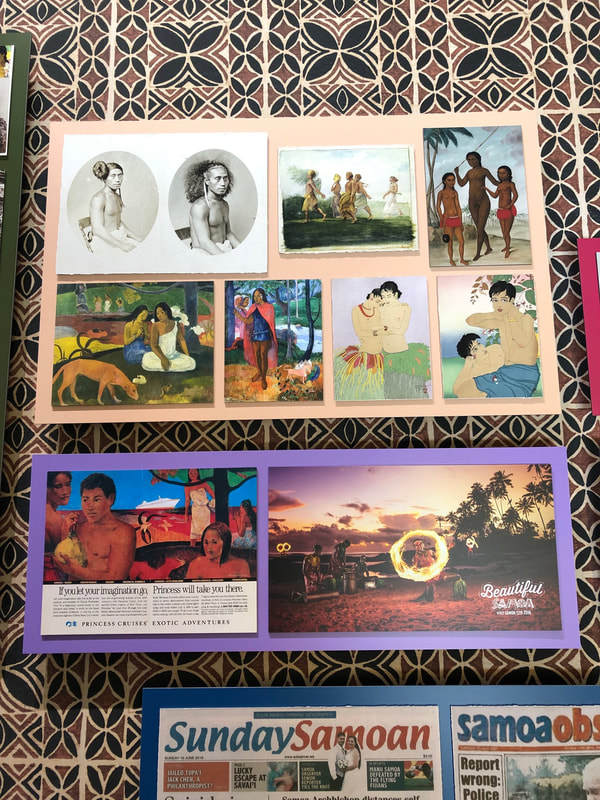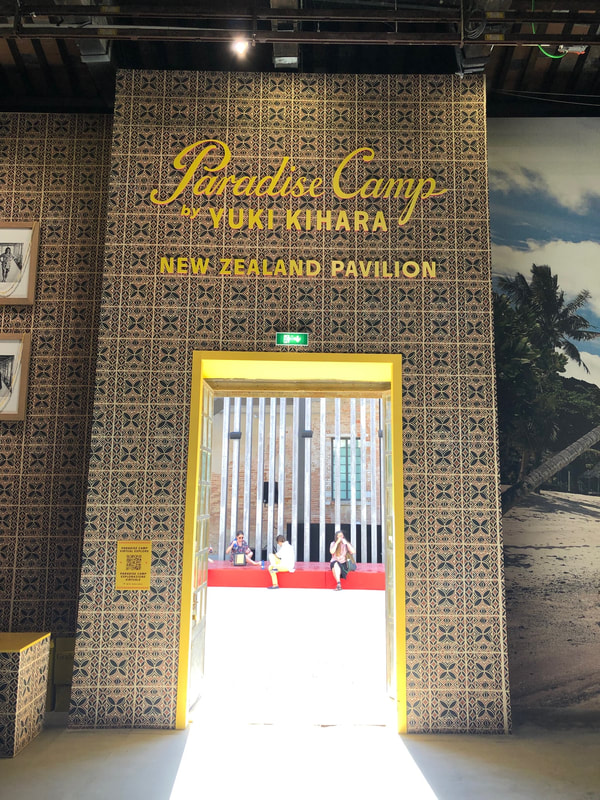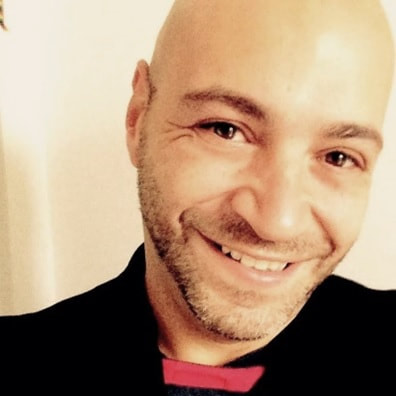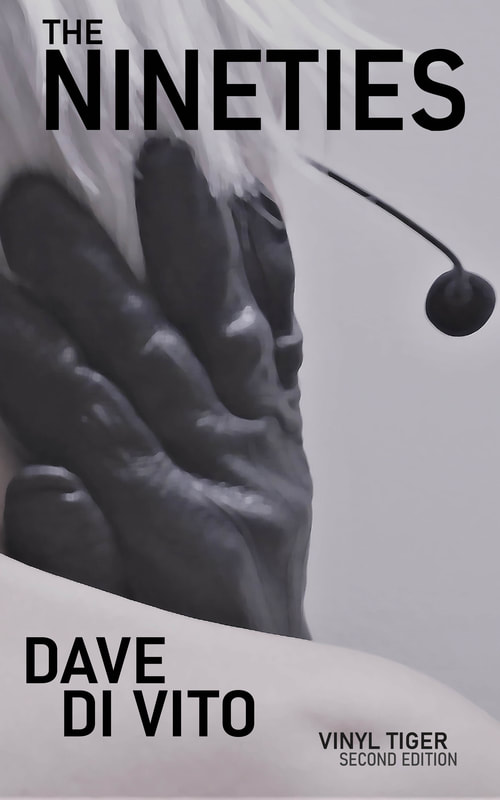|
If you're on the hunt for the 2022 Biennale's most charming artist/force of nature, then you need look no further than the New Zealand pavilion. With twelve extraordinary photos, a video, copius research material and a bit of chutzpah, interdisciplinary artist Yuki Kihara deftly turns the past on its ear. Kihara offers up one of this year's truly intersectional projects and does so with one of the historical art world's real juggernauts in her sights, leaving no stone unturned as she "takes on" (and becomes) Paul Gauguin. Gauguin, represents something of a stepping stone into art and art history for many young people (and a safe crowd pleaser for Art teachers at high schools all around the world). I remember being at high school when I discovered him and immediately being "taken away" by his images.
Along with other European post-impressionists like Van Gogh, Gauguin is part of a cohort of eternally popular artists who thumbed their noses at convention. But, unlike his peers, Gauguin wasn't content with the rolling hillsides of the Provence. His images stood out for their colorful, exotic depictions of life as he saw it in the Pacific. During Gauguin's time, as the world's great powers were in a mad race to colonise the "new world", he was something of a foreign correspondant, his images relaying a heavily exoticised and eroticised view of Tahiti and other islands back to Europe. Whether he intended to or not, his paintings, defined by their very specific outsider's (and male) gaze, established some pretty solid foundations for how the West would perceive the Pacific (and its women). Kihara looks into this contribution more critically than the way we are encouraged to do in school art classes. The starting point for her investigation is a seminal paper published a few years' back by NZ academic Ngahuia Te Awekotuku. In that paper, Te Awekotuku suggested that some of the models from Gauguin's paintings were actually Māhū (the third gender as it is called in some Pacific communities). Through research and a variety of media, Kihara has spent years exploring the idea, which seems to be coming full circle with Paradise Camp, the more complete iteration of the project. For this project, she returned to her native Samoa, where, in partnership with local Fa‘afafine and Fa‘atama (the third gender communities as they are known in Samoa), she sets about recreating many of Gauguin's images in a series of photos. The premise behind the photos is to reclaim (or "Upcycle" as Kihara refers to it) Gauguin's ouevre. It's a form of regaining control over a narrative that was incomplete and lacking... and an attempt to acknowledge the people that history so expertly knows how to ignore. By rebuilding Gauguin's narrative with their help, Kihara is also reasserting the standing and importance of the Fa‘afafine and Fa‘atama. After all, they may have been depicted in Gauguin's images but they have traditionally been ignored in the historical record. I found Yuki's approach had interesting parallels with the Queendom exhibit by Illit Azoulay at the Israeli pavilion. At its heart, it too is a thoroughly researched and brilliantly executed take on the dominant, ingrained narratives that define history. At the same time, Kihara's works basically add more documentation to the record; many of the photos are taken in areas that were ravaged by the 2009 tsunami or that are now under threat due to global warming. Outside of the occasional Pacific Island Forum or the odd international symposiums on climate change, the realities of life in Pacific communities rarely breakthrough to us on a global level. Intersectional projects like these are important for the way they expose how history is purposely written to diminish the segments of any population that are deemed inconvenient, irrelevant or taboo. But when they're done with such obvious commitment (and, I might add, humour), they are impactful because we as viewers, can relate to the projects on a variety of levels. PRACTICALS You'll need a ticket to Arsenale to see this exhibition. Try and put aside as much time as you can; you won't need it so much for the photos, as you will for the video which presents and condenses much of the research and conversation that surrounds the topics Kihara addresses. Artist: Yuki Kihara Curator: Natalie King The NZ pavilion's website is here.
0 Comments
Your comment will be posted after it is approved.
Leave a Reply. |
Dave
|
|
|
Dave Di Vito is a writer, teacher and former curator.He's also the author of the Vinyl Tiger series and Replace The Sky.
For information about upcoming writing projects subscribe to the mailing list. Dave hates SPAM so he won't trouble you with any of his own. He promises. |







 RSS Feed
RSS Feed